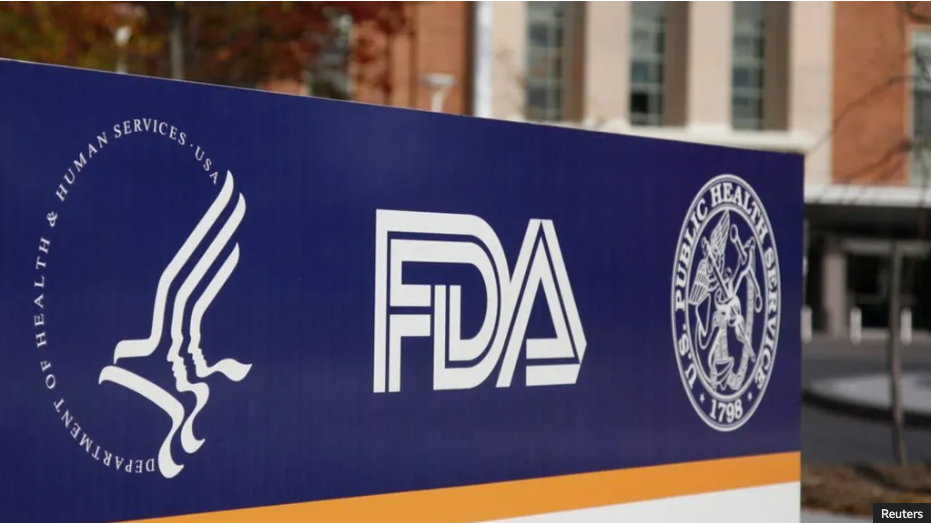May 13th -May 20th 2022
Medical Cannabis to Reduce Cancer-Associated Symptoms: Results from a Prospective Longitudinal Study
Patients’ surveys indicated a decrease in total cancer symptoms burden during six months of medical cannabis treatment.
Cancer development is known to be associated with several symptoms including pain, anxiety, decreased quality of life, or negative effects on sexuality. [1],[2],[3],[4] While there are no adequate treatments, cancer-related pain is mainly treated by opioid analgesics, commonly associated with a high risk of dependence which can lead to overdose and death. As such, the development of alternative therapies is rising, and a promising substitute agent is medical cannabis. However, the few randomized controlled trials with a low sample size leads to a weak recommendation for utilizing medical cannabis-based products for cancer pain treatment.[5]
A team of researchers in Israel conducted a multi-center, prospective, 6-month longitudinal study (January 2019-September 2021) to investigate patients’ views on whether medical cannabis can help cancer-related pain. [6] Patients were asked to answer questions prior to medical cannabis treatment (324 patients) and at one (212 patients), three (158 patients), and six (126 patients) months follow up, specifically on pain measures, analgesics consumption, cancer symptoms burden, cancer comorbid-related symptoms, sexual problems, and adverse events.
They found that most outcome measures were improved after medical cannabis administration, specifically a decreased in total cancer symptoms burden at 6 months. Importantly, reported adverse events were non-serious and remained stable. Limitations from the study included no control or placebo groups assigned, self-report bias, and sizeable dropout rate at the endpoint.
The authors concluded: “This prospective, comprehensive, and large-scale cohort demonstrated an overall mild to modest long-term statistical improvement of all investigated measures including pain, associated symptoms and, importantly, reduction in opioid (and other analgesics) use.”
Neurocognitive and Psychotomimetic Effects of ∆9-Tetrahydrocannabinol (∆9- THC) vs Synthetic Cannabinoid
Results from two placebo-controlled studies showed that synthetic cannabinoids may lead to more pronounced dissociate effects compared to ∆9- THC.
As opposed to phytocannabinoids (cannabinoids from the cannabis plant), synthetic cannabinoids (SCBs) are artificially produced chemicals designed by scientists to mimic the effects of specific cannabinoids, particularly ∆9- tetrahydrocannabinol (∆9-THC). Some of these SCBs include illegal and dangerous molecules (e.g., synthetic marijuana, K2, or spice), which have unpredictable and undesirable effects, including cardiovascular, renal, and gastrointestinal (GI) toxicities that can lead to death. [7],[8]
In contrast to Δ9-THC which only partially activates the endocannabinoid system (ECS) receptors, SCBs strongly activate both cannabinoid receptor 1 and 2 (CB1R and CB2R). [9],[10]
A group of researchers from Maastricht University in the Netherlands aimed to compare the neurocognitive and psychotomimetic effects of ∆9-THC and a SCB (JWH-018) from two placebo-controlled studies using a wide of performance and subjective measures.
They found that both compounds led to similar levels of subjective high while impairing psychomotor, divided attention, and impulse control. Importantly, subjective questionnaires showed that both drugs led to significant psychotomimetic (i.e., effects but the dissociate effects (i.e., known to occur in psychiatric disorders such as schizophrenia) were stronger in JWH-018. In fact, psychotomimetic and dissociative effects have been reported in patients using SBCs. [11]
The authors concluded: “With the high potency of SCs and the inconsistent content of smoking mixtures, it is very difficult for users to predict the maximal subjective high, resulting in very unpredictable neurocognitive outcomes and common overdosing.”
Can a Cannabidiolic Acid (CBDA) Derivative Help Treat Obesity?
Animal studies showed that EPM301, a CBDA derivative, was able to reduce weight and appetite while promoting metabolic parameters, a new study suggest.
Obesity is a chronic disease that is increasing in prevalence and is now considered a global epidemic. Elevated high body mass is known to be associated with poor prognosis and increased risks of chronic diseases including cardiovascular and musculoskeletal diseases and diabetes. [12],[13] According to the World Obesity Atlas 2022, one billion people globally will be living with obesity by 2030, raising the importance to find additional treatments to reduce this number. [14]
There are different forms of obesity: an environmental-based where excessive eating and sedentary lifestyle are present leading to diet-induced obesity (DIO) and a genetic-induced obesity (GIO) such as Prader-Willi syndrome (PWS), characterized by delated motor and language skills. [15],[16] Limited treatments for DIO and PWS are pushing the scientific community to find alternative agents to help these patients.
One of the potential therapeutic targets is the endocannabinoid system (ECS), composed of cannabinoid receptors 1 and 2 (CB1R, CB2R), found to be over-activated in patients with obesity and in PWS patients. [17],[18] Along this way, phytocannabinoids, and specifically cannabidiol (CBD) is gaining increasing attention due to its potential therapeutic property and safety profile. While more is known about CBD, limited studies are available cannabidiolic acid (CBDA), CBD’s chemical precursor.
A group of researchers in Israel aimed to investigate the potential of a CBDA’s derivate, EPM201 in modulating appetite reduction, weight loss and metabolic parameters in mice models of DIO and PWS. [19]. On one hand, they found that EPM301 ameliorated obesity (i.e., reduced body weight and adiposity) and metabolic abnormalities (i.e., improved glucose homeostasis and liver function) in both mouse models of DIO and PWS. On the other hand, EPM301 also prevented weight gain and adiposity when given to standard-diet fed GIO, suggesting it may be used as a preventive agent.
The authors concluded: “All together, EPM301 ameliorated obesity and its metabolic abnormalities in both DIO and GIO. These results support the idea to further promote this synthetic CBDA derivative toward clinical evaluation in humans.”
Endocannabinoid System (ECS) & the Lesser-Known Phytocannabinoids
In vitro studies using human keratinocytes showed that some of the lesser-known phytocannabinoids can regulate gene and protein expression of distinct ECS elements differently.
The cannabis plant contains more than 500 known compounds including phytocannabinoids, terpenes and flavonoids. [20] There are as many as 113 different phytocannabinoids including cannabidiol (CBD) and ∆9-tetrahydrocannabinol (∆9-THC) which are the most used and studied. However, there is growing interest in investigating the potential of the lesser-known phytocannabinoids including cannabigerol (CBG), cannabichromene (CBC), ∆9-tetrahydrocannabivarin (THCV), and cannabigerolic acid (CBGA). Understanding how each may interact with the endocannabinoid system and corresponding receptors (e.g., cannabinoid receptor 1 and 2 (CB1R and CB2R)) may shine new light onto novel therapeutic targets for different diseases as well as reveal potential negative outcomes.
A group of Italian and Canadian researchers performed an in-depth analysis of the effects of the four above phytocannabinoids on viability, apoptosis, cell cycle as well as gene/protein expression and functional activity of ECS elements using human keratinocytes (primary cell type found in the epidermis, outermost layer of the skin) as an in vitro model. [21]
They found that these lesser known phytocannabinoids increased CB1R/CB2R binding, transient receptor potential of vanilloid subtype 1 (TRPV1) channel stimulation and fatty acid amide hydrolase (FAAH) and monoacylglycerol lipase (MAGL) activity, enzymes responsible for the degradation of endogenous cannabinoids (made within the body).
The authors concluded: “These rare phytocannabinoids could be used in their pure form as therapeutic drugs, provided that a careful biochemical profiling of their targets and potential off-targets outside the ECS is preliminarily performed. Only then can their therapeutic potential be exploited by ruling out the harmful effects that are often observed cannabis extracts are used as recreational drugs.”
References
[1] Portenoy RK, Ebtesam A. Cancer pain syndromes. Hematol Oncol Clin North America. (2018) 32:371–86. doi: 10.1016/j.hoc.2018.01.002
[2] Curran L, Sharpe L, Butow P. Anxiety in the context of cancer: a systematic review and development of an integrated model. Clin Psychol Rev. (2017) 56:40–54. doi: 10.1016/j.cpr.2017.06.003
[3] Allart-Vorelli P, Porro B, Baguet F, Michel A, Cousson-Gélie F. Haematological cancer and quality of life: a systematic literature review. Blood Cancer J. (2015) 5:e305–e305. doi: 10.1038/bcj.2015.29
[4] Rhoten BA. Head and neck cancer and sexuality. Cancer Nurs. (2016) 39:313– 20. doi: 10.1097/NCC.0000000000000289
[5] Häuser W, Welsch P, Klose P, Radbruch L, Fitzcharles MA. Efficacy, Tolerability and Safety of Cannabis-Based Medicines for Cancer Pain : A Systematic Review with Meta-Analysis of Randomised Controlled Trials. (Berlin, Germany: Schmerz). (2019). doi: 10.1007/s00482-019-0373-3
[6] Aviram J, Lewitus GM, Vysotski Y, et al. The Effectiveness and Safety of Medical Cannabis for Treating Cancer Related Symptoms in Oncology Patients. Front Pain Res (Lausanne) 2022;3:861037. DOI: 10.3389/fpain.2022.861037.
[7] Ford BM, Tai S, Fantegrossi WE, Prather PL. Synthetic Pot: Not Your Grandfather’s Marijuana. Trends Pharmacol Sci 2017;38(3):257-276. DOI: 10.1016/j.tips.2016.12.003.
[8] Mills B, Yepes A, Nugent K. Synthetic Cannabinoids. Am J Med Sci 2015;350(1):59-62. DOI: 10.1097/MAJ.0000000000000466.
[9] Castaneto MS, Gorelick DA, Desrosiers NA, Hartman RL, Pirard S, Huestis MA. Synthetic cannabinoids: epidemiology, pharmacodynamics, and clinical implications. Drug Alcohol Depend 2014;144:12-41. DOI: 10.1016/j.drugalcdep.2014.08.005.
[10] Walsh KB, Andersen HK. Molecular Pharmacology of Synthetic Cannabinoids: Delineating CB1 Receptor-Mediated Cell Signaling. Int J Mol Sci 2020;21(17). DOI: 10.3390/ijms21176115.
[11] Forrester MB, Kleinschmidt K, Schwarz E, Young A. Synthetic cannabinoid and marijuana exposures reported to poison centers. Hum Exp Toxicol 2012;31(10):1006-11. DOI: 10.1177/0960327111421945.
[12] Singh GM, Danaei G, Farzadfar F, et al. The age-specific quantitative effects of metabolic risk factors on cardiovascular diseases and diabetes: a pooled analysis. PLoS One 2013;8(7):e65174. DOI: 10.1371/journal.pone.0065174.
[13] Jiang L, Tian W, Wang Y, et al. Body mass index and susceptibility to knee osteoarthritis: a systematic review and meta-analysis. Joint Bone Spine 2012;79(3):291-7. DOI: 10.1016/j.jbspin.2011.05.015.
[14] https://www.worldobesityday.org/policy-makers, assessed on May 15th, 2022
[15] Hariri N, Thibault L. High-fat diet-induced obesity in animal models. Nutr Res Rev 2010;23(2):270-99. DOI: 10.1017/S0954422410000168
[16] Huvenne H, Dubern B, Clement K, Poitou C. Rare Genetic Forms of Obesity: Clinical Approach and Current Treatments in 2016. Obes Facts 2016;9(3):158-73. DOI: 10.1159/000445061
[17] Azar S, Sherf-Dagan S, Nemirovski A, et al. Circulating Endocannabinoids Are Reduced Following Bariatric Surgery and Associated with Improved Metabolic Homeostasis in Humans. Obes Surg 2019;29(1):268-276. DOI: 10.1007/s11695-018-3517-0.
[18] Knani I, Earley BJ, Udi S, et al. Targeting the endocannabinoid/CB1 receptor system for treating obesity in Prader-Willi syndrome. Mol Metab 2016;5(12):1187-1199. DOI: 10.1016/j.molmet.2016.10.004
[19] Ben-Cnaan E, Permyakova A, Azar S, et al. The Metabolic Efficacy of a Cannabidiolic Acid (CBDA) Derivative in Treating Diet- and Genetic-Induced Obesity. Int J Mol Sci 2022;23(10). DOI: 10.3390/ijms23105610
[20] Goncalves J, Rosado T, Soares S, et al. Cannabis and Its Secondary Metabolites: Their Use as Therapeutic Drugs, Toxicological Aspects, and Analytical Determination. Medicines (Basel) 2019;6(1). DOI: 10.3390/medicines6010031.
[21] Di Meo C, Tortolani D, Standoli S, et al. Effects of Rare Phytocannabinoids on the Endocannabinoid System of Human Keratinocytes. Int J Mol Sci 2022;23(10). DOI: 10.3390/ijms23105430.






